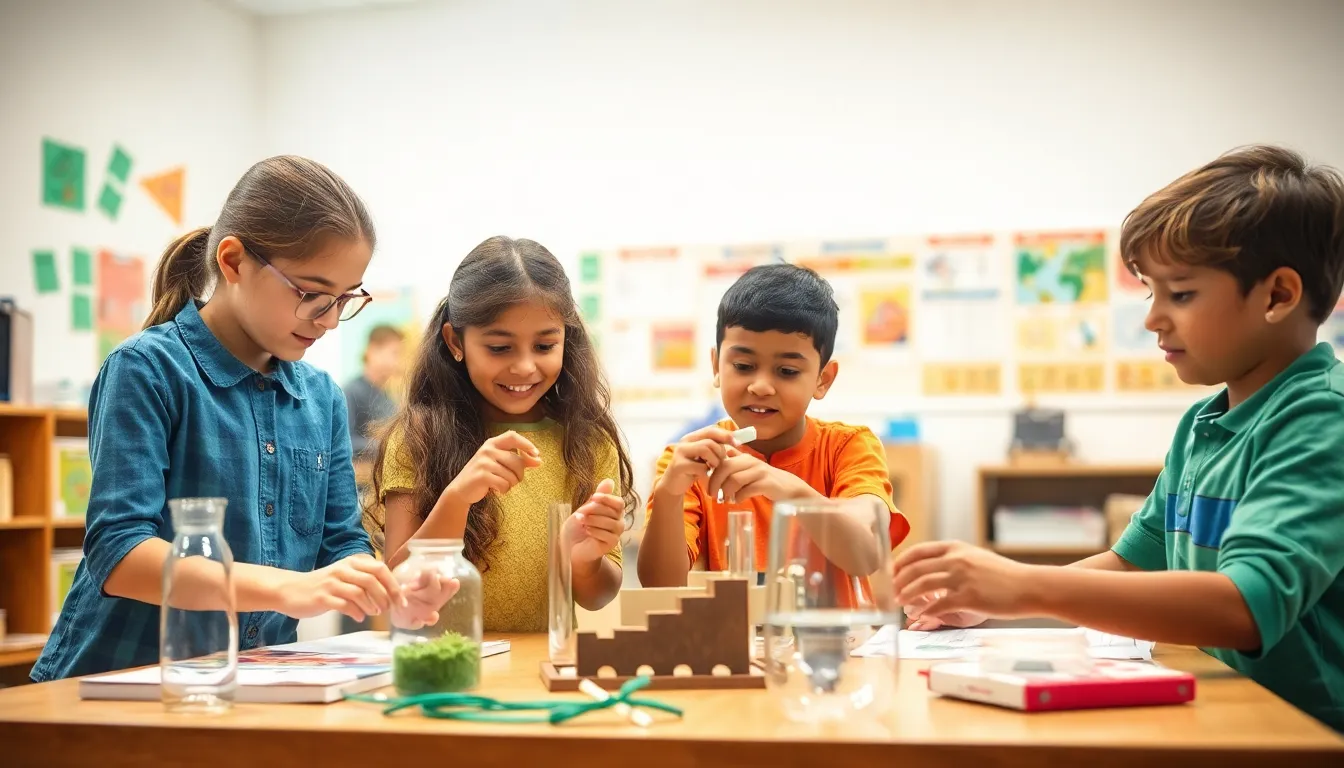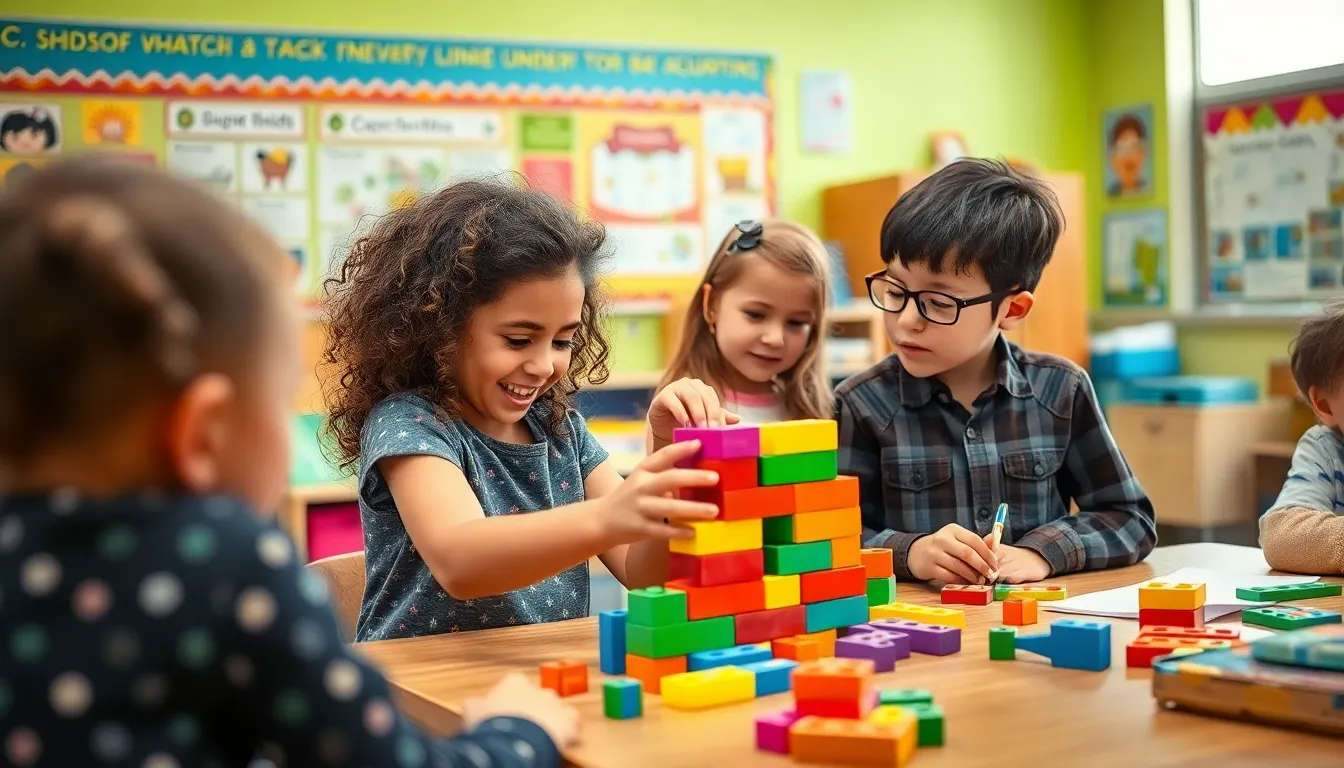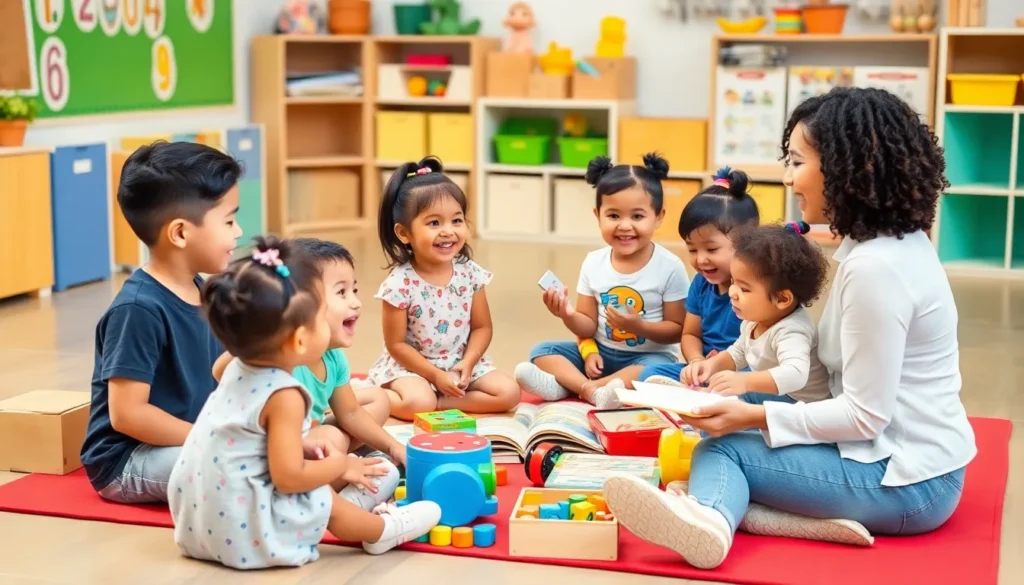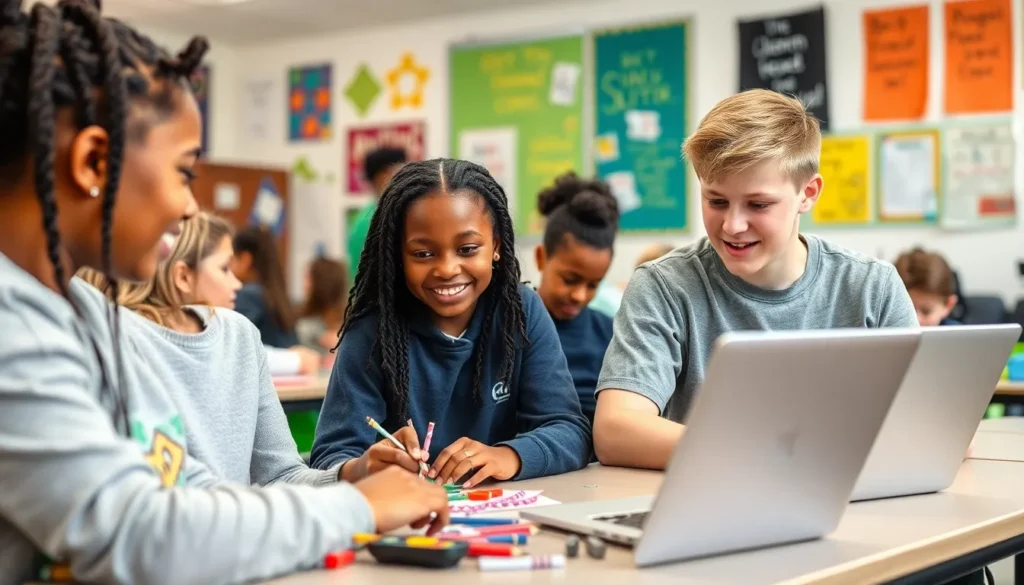Table of Contents
ToggleImagine trying to learn how to ride a bike while only reading a manual. Sounds frustrating, right? That’s where multisensory learning swoops in like a superhero, transforming the way we absorb information. By engaging multiple senses—sight, sound, touch, and even taste—this approach makes learning not just effective but downright enjoyable.
Understanding Multisensory Learning
Multisensory learning involves engaging multiple senses to enhance the educational experience. This approach not only supports information retention but also motivates learners through varied experiences.
Definition and Importance
Multisensory learning refers to teaching methods that incorporate visual, auditory, tactile, and kinesthetic elements. Research shows this strategy caters to different learning styles, improving engagement and understanding. Engaging multiple senses during instruction facilitates deeper connections with the material, making concepts more relatable. Activities like using manipulatives or interactive storytelling serve as effective examples of this approach. Enhanced recall of information leads to better academic performance, reinforcing the importance of incorporating multisensory techniques into education.
The Science Behind It
Cognitive psychology supports multisensory learning by indicating that the brain processes information more efficiently when multiple senses are activated. Studies reveal this technique enhances memory retention, as learners can create stronger associations through varied sensory inputs. Neurological research emphasizes the advantages of multisensory pathways, linking them to improved brain function and learning outcomes. Additionally, sensory-rich environments create positive emotional responses, further motivating learners to engage with the material. Overall, the scientific foundation highlights the effectiveness of multisensory strategies in fostering meaningful learning experiences.
Benefits of Multisensory Learning

Multisensory learning offers numerous advantages that enhance educational experiences. It promotes deeper understanding and retention of information, impacting cognitive and emotional aspects of learning.
Cognitive Advantages
Cognitive advantages stem from the engagement of various senses during the learning process. Such approaches enhance memory retention significantly. Studies show that learners gain improved comprehension when visual, auditory, and tactile stimuli work together. Facilitating connections between new information and prior knowledge occurs more naturally in this enriched environment. Learners often achieve higher academic performance as multisensory approaches cater to diverse learning styles. Moreover, this technique allows for greater critical thinking skills and problem-solving abilities through dynamic interaction with material.
Emotional Engagement
Emotional engagement plays a critical role in the effectiveness of multisensory learning. Learners exhibit increased motivation and enthusiasm when multiple senses are involved. Such interactions create stronger emotional connections to the content. Environments rich in sensory experiences foster curiosity and exploration, boosting overall engagement. Engaging stories or hands-on activities elicit positive feelings, making learning enjoyable and meaningful. Students tend to develop greater confidence and self-efficacy as they succeed in multisensory tasks, further enhancing their emotional investment in learning outcomes.
Techniques and Strategies
Multisensory learning incorporates various techniques to enhance the educational experience. These strategies engage different senses, improving understanding and retention.
Visual Techniques
Visual techniques utilize imagery, colors, and diagrams to present information. Charts, graphs, and infographics enhance comprehension by providing clear visual representations. Incorporating videos and projectors helps capture attention and reinforces learning. Interactive whiteboards allow for dynamic lesson presentations, where students can participate directly. Using real-life visuals connects concepts to everyday life, promoting relevance in learning.
Auditory Techniques
Auditory techniques emphasize sound to facilitate understanding. Listening to podcasts or recorded lectures supports different learning styles. Group discussions encourage participant engagement and stimulate critical thinking. Songs and rhymes can aid memory retention through catchy tunes and repetition. Incorporating auditory cues enhances focus during lessons, allowing learners to process information more effectively.
Kinesthetic Techniques
Kinesthetic techniques enable hands-on experiences that facilitate learning through movement. Using manipulatives helps students grasp abstract concepts by making them tangible. Role-playing activities encourage learners to immerse themselves in scenarios, fostering deeper understanding. Outdoor experiments or interactive games promote active participation, reinforcing lessons in an enjoyable manner. Integrating physical movement ensures that learners remain engaged and focused throughout the process.
Applications in Education
Multisensory learning finds extensive applications in education, enhancing engagement and comprehension across various learning contexts. Educators implement techniques that incorporate multiple senses to deepen learners’ understanding.
Classroom Implementation
Teachers utilize multisensory strategies to engage students actively. Incorporating visual aids like charts and videos creates a stimulating environment. Interactive activities such as role-play help develop communication skills. Using manipulatives in math lessons allows students to grasp abstract concepts effectively. Group projects encourage collaboration, fostering social skills alongside academic learning. Each method enriches the educational experience, catering to diverse learning preferences.
Case Studies
Numerous case studies demonstrate the effectiveness of multisensory learning. In one example, a sensory-rich curriculum significantly improved reading scores among elementary students. Another study highlighted how incorporating music in science lessons enhanced concept retention for middle school students. High schoolers engaged in art and movement activities displayed increased motivation and lower dropout rates. Results indicate that multisensory approaches result in better academic outcomes. Tailoring lessons to include varied sensory experiences proves beneficial for learners at all levels.
Multisensory learning transforms the educational landscape by engaging learners on multiple levels. This approach not only enhances retention but also fosters a deeper emotional connection to the material. By incorporating various sensory experiences, educators can boost motivation and create a more dynamic learning environment. The techniques discussed showcase the versatility of multisensory methods across different subjects and age groups. As more educators adopt these strategies, the potential for improved academic outcomes becomes increasingly evident. Embracing multisensory learning is a step toward cultivating a richer and more effective educational experience for all learners.




